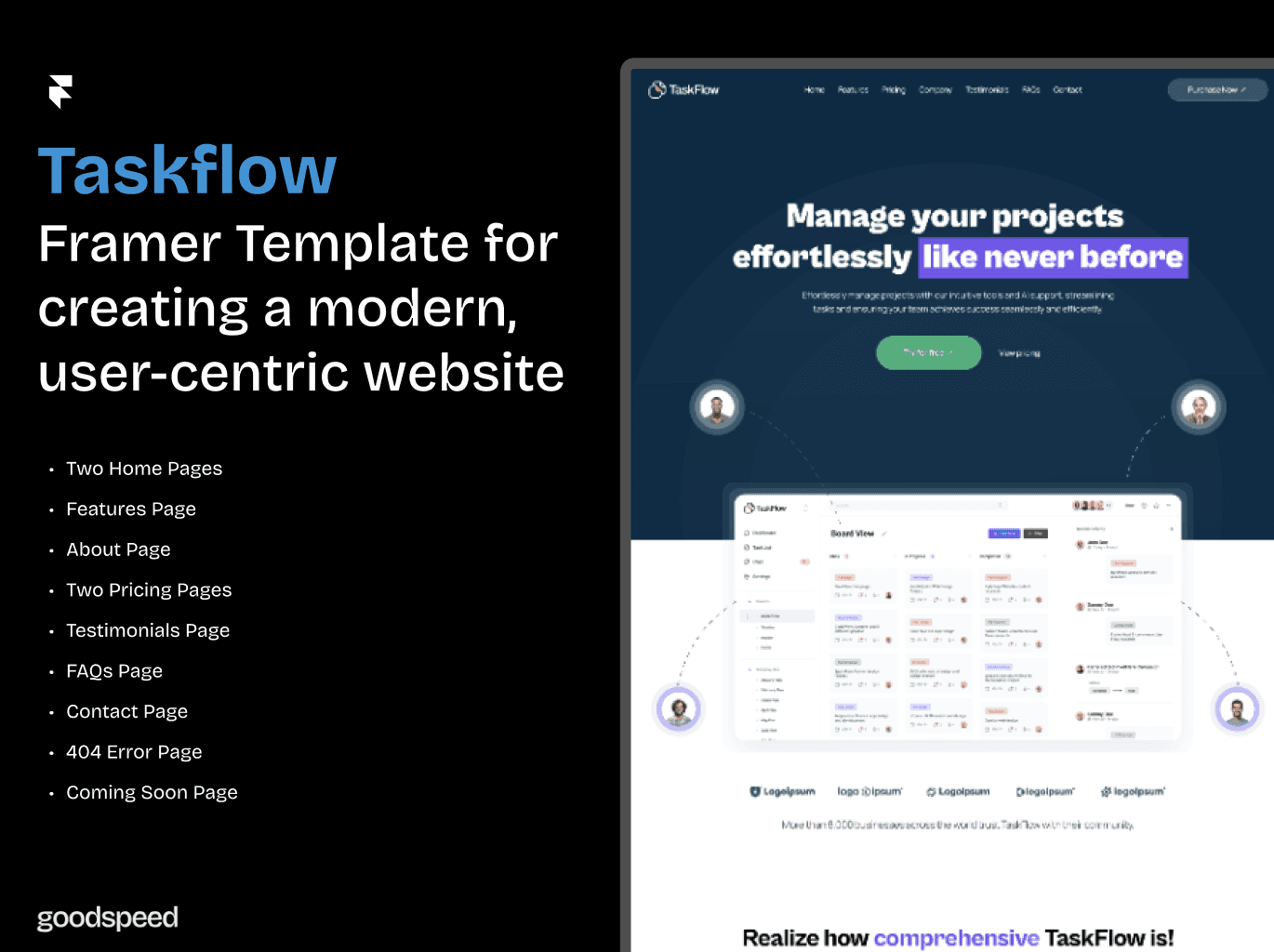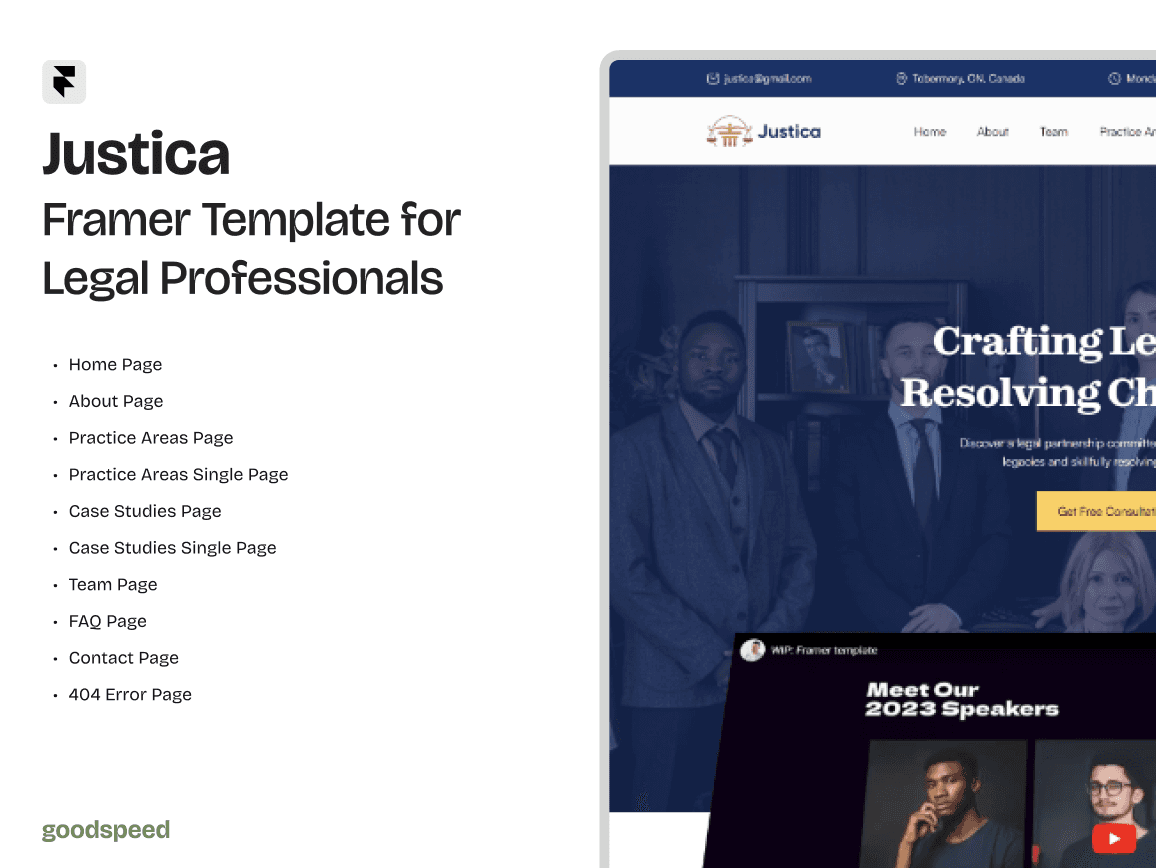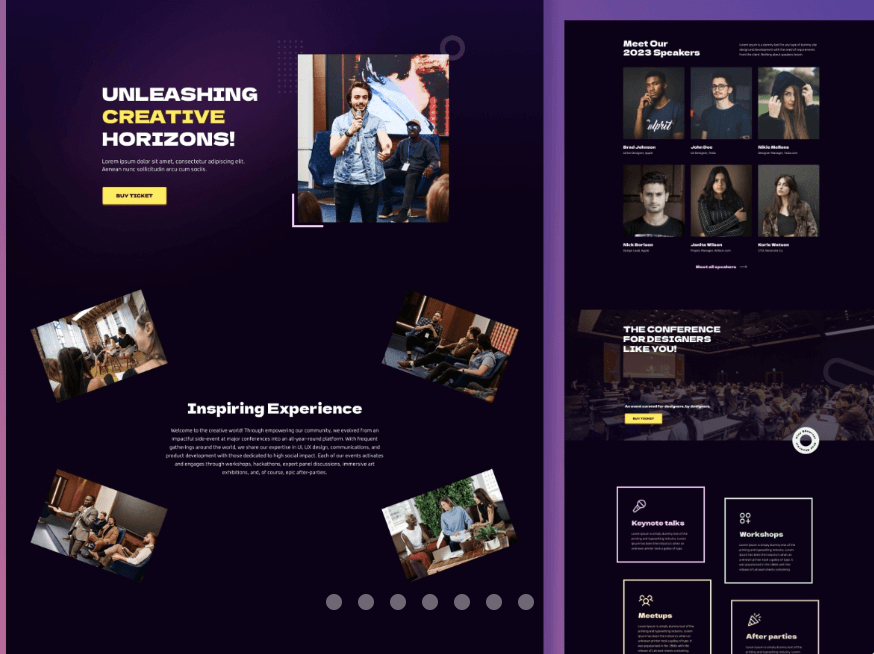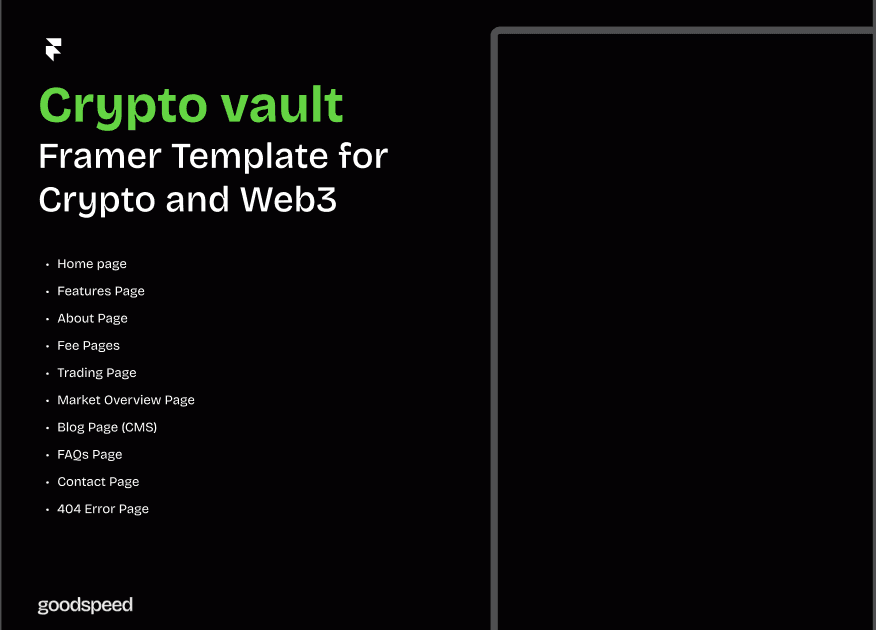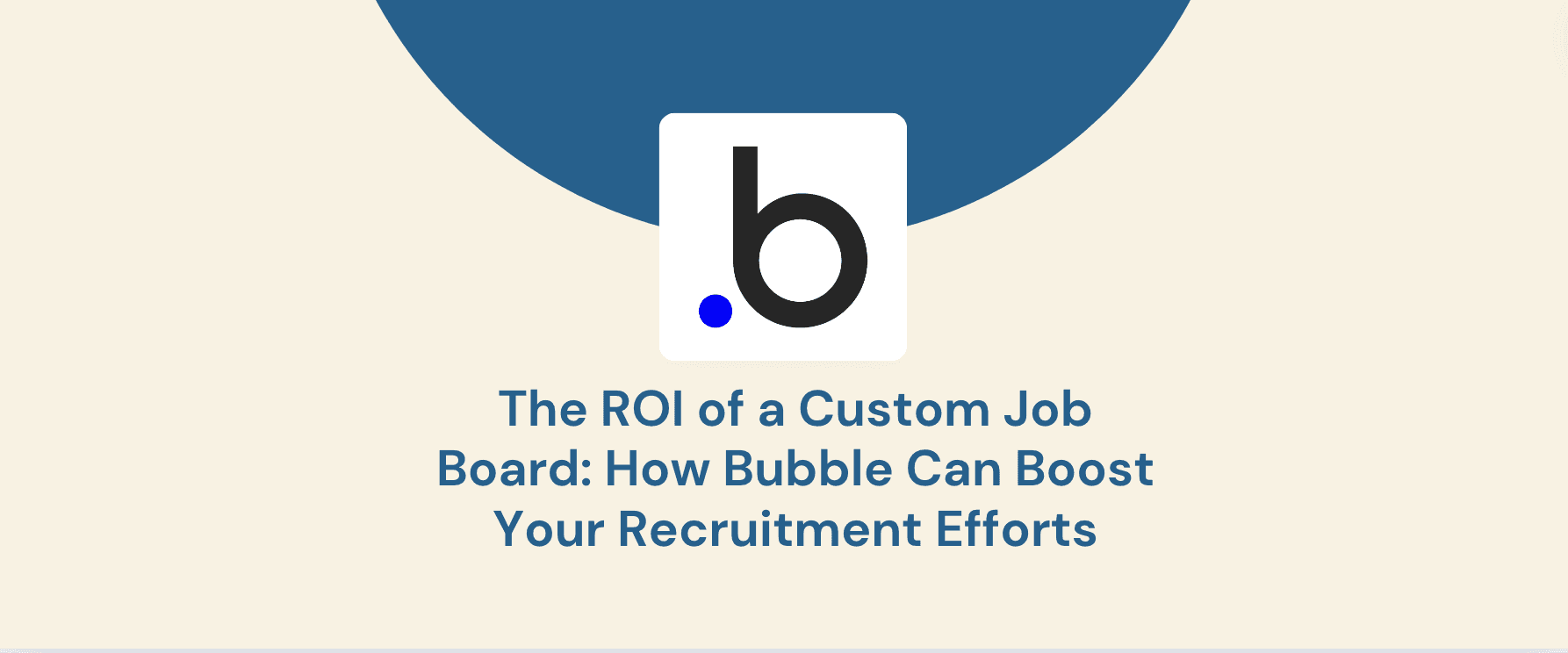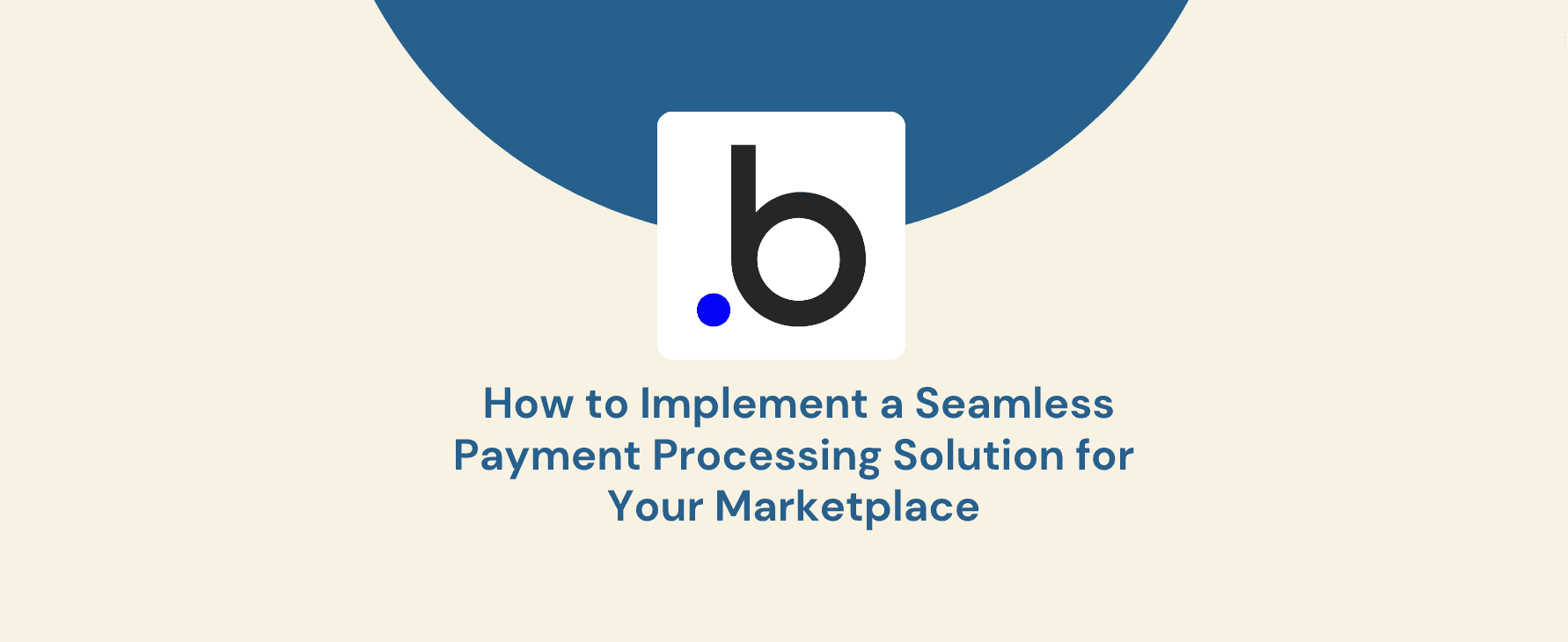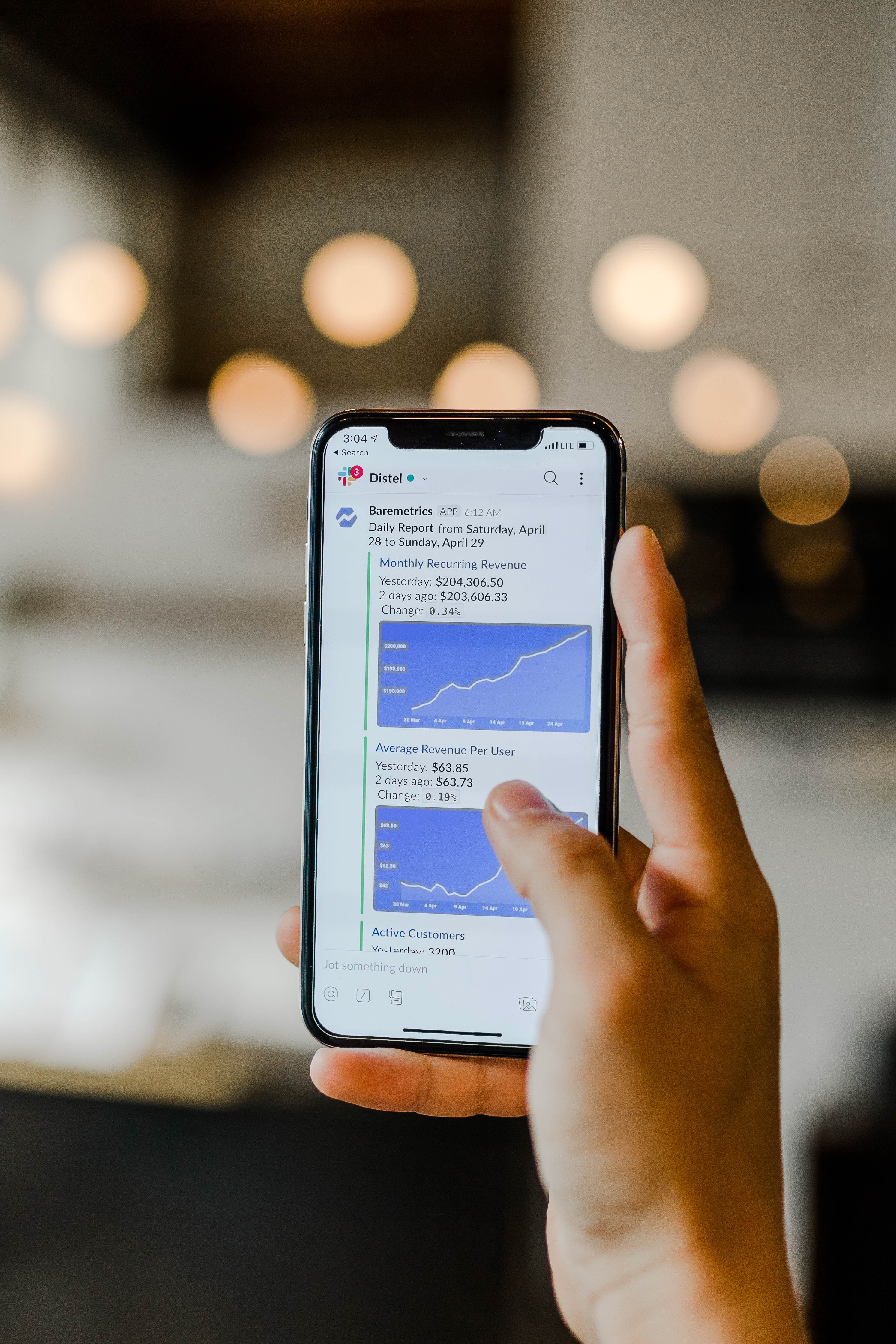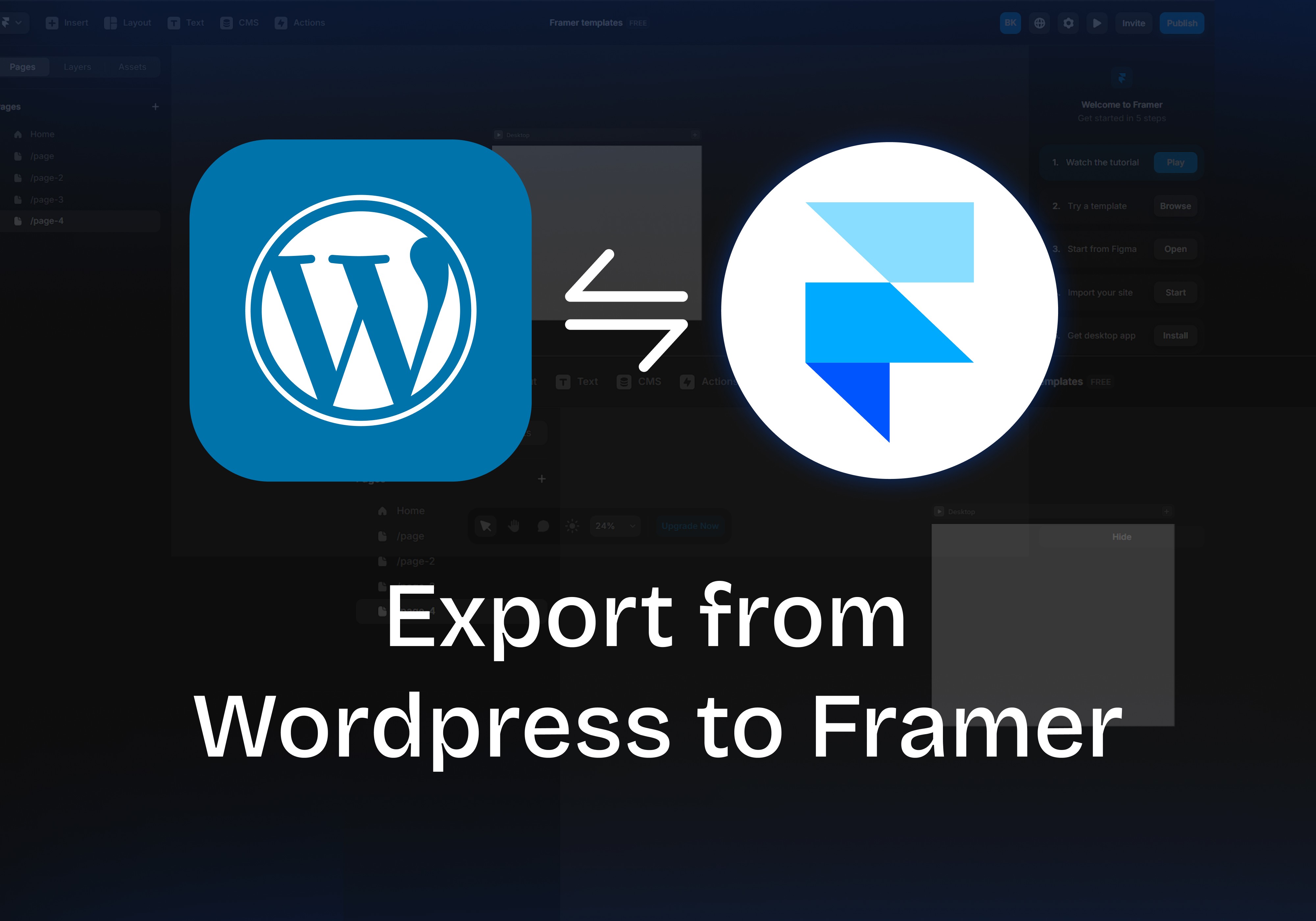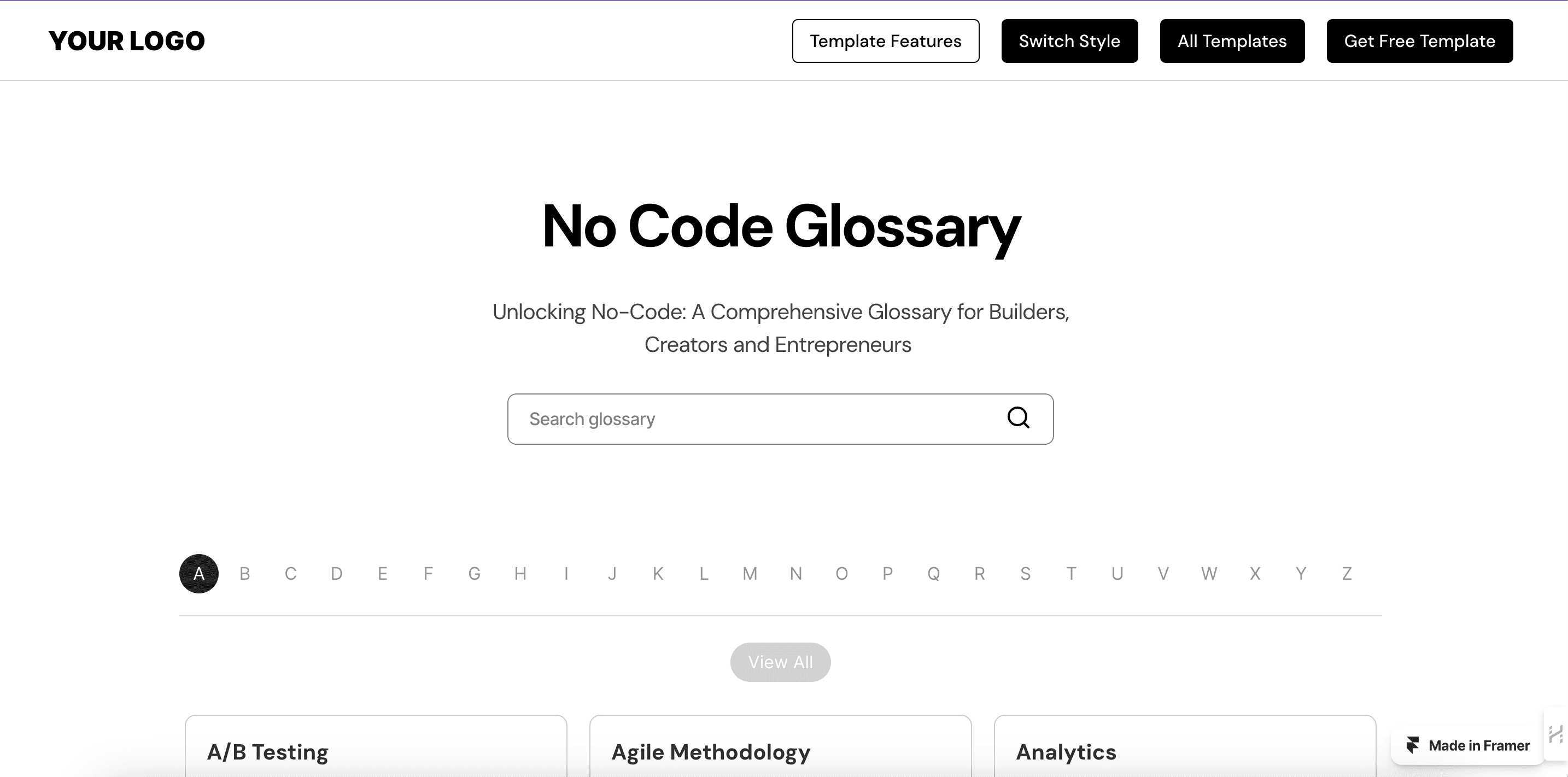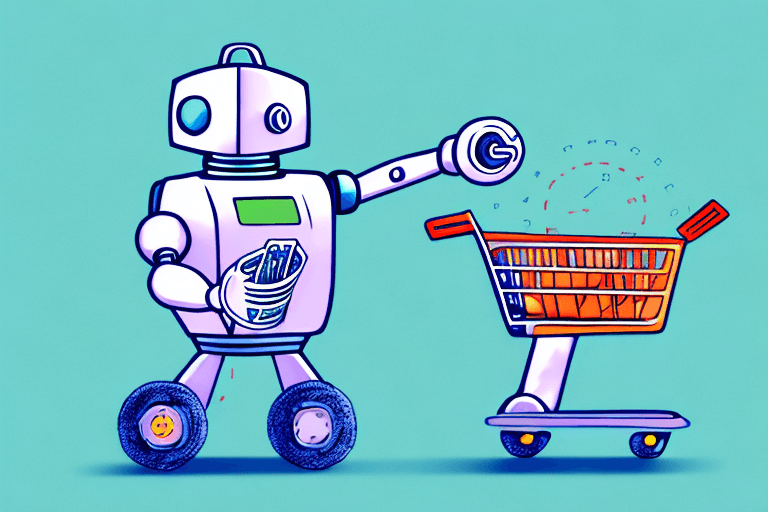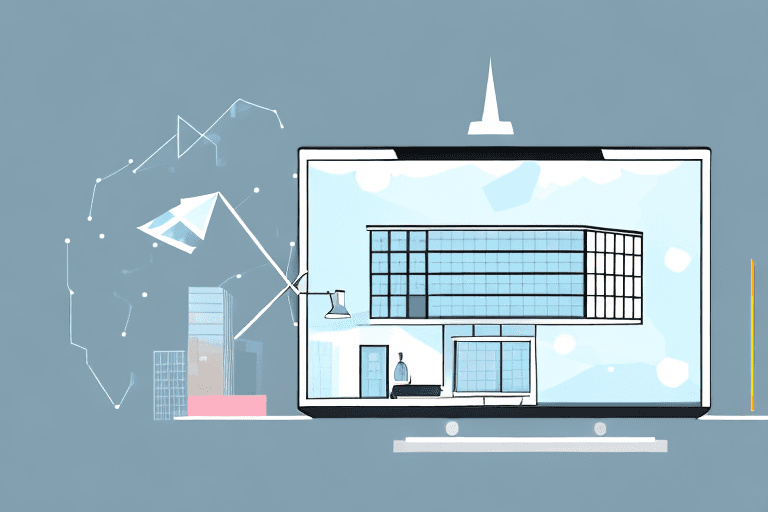SaaS (Software as a Service) products have become indispensable tools for businesses of all sizes today. To succeed in this competitive market, it's essential to create a product that not only offers exceptional functionality but also delivers a seamless user experience. This is where templates like TaskFlow come into play.
TaskFlow is a comprehensive Framer template designed specifically for SaaS product development. It provides a solid foundation for building visually appealing and user-friendly interfaces, saving developers time and effort. In this article, we'll delve into the details of TaskFlow, exploring its key features, benefits, and how it can streamline your SaaS development process.
Understanding TaskFlow
TaskFlow is more than just a template; it's a carefully crafted toolkit that empowers you to create exceptional SaaS products. At its core, TaskFlow offers a collection of pre-designed components and layouts that can be easily customised to match your specific brand and requirements.
Key Components of TaskFlow:
Landing Pages: Create compelling landing pages to attract and convert visitors into customers.
Dashboards: Design intuitive dashboards that provide users with a clear overview of their data and actions.
Pricing Pages: Showcase your pricing plans in a visually appealing and informative manner.
Sign-up Forms: Collect user information efficiently with well-designed sign-up forms.
Profile Pages: Allow users to manage their personal information and preferences.
Help Center: Provide comprehensive documentation and support resources.
What Sets TaskFlow Apart:
Modern Design: TaskFlow adheres to the latest design trends, ensuring your product looks fresh and contemporary.
Responsiveness: The template is fully responsive, adapting seamlessly to different screen sizes and devices.
Customization: Easily customise the template's colours, fonts, and layouts to match your brand identity.
Integration: TaskFlow integrates seamlessly with popular tools and platforms, such as payment gateways and analytics services.
Efficiency: By leveraging pre-built components, you can accelerate your development process and reduce time-to-market.
Benefits of Using TaskFlow
Visual Appeal and User Experience
One of the most significant advantages of using TaskFlow is its ability to create visually stunning and user-friendly interfaces. The template's modern design and responsive layouts ensure that your SaaS product looks great on all devices, from desktops to smartphones.
Intuitive Navigation: TaskFlow's well-structured navigation helps users find their way around your product easily, reducing frustration and improving overall satisfaction.
Clear Information Architecture: The template's components are designed to present information in a clear and concise manner, making it easy for users to understand and take action.
Enhanced Engagement: A visually appealing and user-friendly interface can significantly improve user engagement and retention.
Functionality and Efficiency
Beyond its visual appeal, TaskFlow also offers robust functionality that can streamline your development process and enhance the overall user experience.
Pre-built Components: The template's pre-designed components save you time and effort by providing a solid foundation for your product's features.
Customization Options: While TaskFlow offers pre-built components, you can easily customise them to meet your specific needs and branding requirements.
Integration Capabilities: TaskFlow integrates seamlessly with popular tools and platforms, such as payment gateways, analytics services, and customer support systems.
Time-Saving: By leveraging TaskFlow, you can significantly reduce development time and accelerate your time-to-market.
Use Cases
TaskFlow, as a versatile SaaS Framer template, can be adapted to a wide range of applications. Let's explore some common use cases where TaskFlow can be effectively employed:
1. Project Management Tools
Project management tools often require intuitive interfaces to visualise tasks, timelines, and resources. TaskFlow's components, such as Kanban boards, Gantt charts, and calendars, can be seamlessly integrated to create a visually appealing and functional project management dashboard.
Key features for project management:
Task management: Create, assign, and track tasks using Kanban boards or lists.
Time tracking: Implement time tracking features to monitor project progress and resource allocation.
Calendar integration: Integrate with external calendars to synchronise project deadlines and events.
Team collaboration: Facilitate team collaboration with features like shared calendars, file sharing, and real-time updates.
2. CRM Software
CRM (Customer Relationship Management) software needs to capture and manage customer data efficiently. TaskFlow's components, such as contact lists, pipelines, and customer profiles, can be customised to create a comprehensive CRM system.
Key features for CRM:
Contact management: Store and organise customer information, including contact details, company information, and purchase history.
Sales pipeline: Visualise the sales process with a pipeline view, tracking leads, opportunities, and closed deals.
Customer support: Implement features for managing customer inquiries, tickets, and support cases.
Analytics: Track key metrics, such as customer acquisition, retention, and satisfaction.
3. E-commerce Platforms
E-commerce platforms require user-friendly interfaces for product catalogues, shopping carts, and checkout processes. TaskFlow's components, such as product grids, shopping cart summaries, and checkout forms, can be adapted to create a seamless online shopping experience.
Key features for e-commerce:
Product catalogue: Showcase products with high-quality images, descriptions, and pricing information.
Shopping cart: Allow customers to add products to their carts and view order summaries.
Checkout process: Guide customers through a smooth checkout process, including payment options and shipping information.
User accounts: Create user accounts for personalised shopping experiences and order history.
4. SaaS Marketplaces
SaaS marketplaces need to effectively showcase and promote various SaaS products. TaskFlow's components, such as product listings, search functionality, and vendor profiles, can be used to create a visually appealing and functional marketplace.
Key features for SaaS marketplaces:
Product listings: Display detailed information about each SaaS product, including features, pricing, and reviews.
Search functionality: Implement a robust search engine to help users find the right products.
Vendor profiles: Showcase information about SaaS vendors, including their company details and product offerings.
Reviews and ratings: Allow users to rate and review SaaS products.
5. Other SaaS Applications
TaskFlow can be adapted to a wide range of other SaaS applications, including:
HR software: Create employee directories, time tracking systems, and performance management tools.
Financial software: Develop accounting dashboards, expense tracking systems, and invoicing tools.
Marketing software: Design email marketing campaigns, social media management tools, and lead generation forms.
By leveraging TaskFlow's versatility and customization options, you can create tailored SaaS applications that meet the specific needs of your target audience and drive business growth.
SEO Optimization with TaskFlow
SEO (Search Engine Optimization) is crucial for the success of any SaaS product, as it helps you reach your target audience and drive organic traffic to your website. TaskFlow can play a significant role in optimising your SaaS product for search engines.
Best Practices for SEO Optimization
Keyword Research: Identify relevant keywords and phrases related to your SaaS product and industry.
On-Page Optimization: Incorporate keywords naturally into your content, including titles, headings, meta descriptions, and image alt text.
Content Quality: Create high-quality, informative content that addresses the needs of your target audience.
Technical SEO: Ensure your website is technically optimised for search engines, including factors like mobile-friendliness, page speed, and site structure.
How TaskFlow Can Help
SEO-Friendly Structure: TaskFlow's components are designed to be SEO-friendly, with clear headings and structured content.
Customization Options: You can customise the template's elements to include relevant keywords and meta information.
Integration with SEO Tools: TaskFlow can be integrated with popular SEO tools to help you track your website's performance and make data-driven optimization decisions.
Getting Started with TaskFlow
If you're ready to embark on your SaaS development journey with TaskFlow, here's a step-by-step guide to get you started:
1. Purchase or Download TaskFlow
To get started with TaskFlow, you can purchase the template from this link . Once you've completed your purchase, you'll receive a download link and instructions on how to install the template into your Framer project.
2. Familiarise Yourself with the Template
Explore components: Take some time to explore the different components included in TaskFlow, such as landing pages, dashboards, and pricing pages.
Understand the structure: Familiarise yourself with the template's overall structure and how the different components fit together.
3. Customise the Template
Change colours and fonts: Adjust the template's colours and fonts to match your brand identity.
Modify layouts: Rearrange or remove elements to create a unique design.
Add or remove content: Customise the text and images to reflect your specific product or service.
4. Integrate with Your Tools
API integration: TaskFlow can be integrated with other tools and platforms through its API. This allows you to connect your product to external services, such as payment gateways, analytics tools, and customer support systems.
Third-party plugins: Framer offers a variety of third-party plugins that can be used to extend Task Flows functionality. These plugins can add features like animation, data visualisation, and social media integration.
5. Build Your Product
Use the components: Leverage TaskFlow's pre-built components to create your product's interface.
Add custom elements: If needed, create custom elements using Framer's design tools.
Test and refine: Thoroughly test your product to ensure it functions correctly and provides a seamless user experience.
6. Launch and Iterate
Publish your product: Once your product is ready, publish it to the web or app store.
Gather feedback: Collect feedback from users to identify areas for improvement.
Iterate and update: Continuously update and improve your product based on user feedback and market trends.
By following these steps, you can effectively use TaskFlow to create a visually appealing and functional SaaS product. Remember to experiment, customise, and iterate to create a product that meets the needs of your target audience.
TaskFlow is a powerful and versatile template that can help you create exceptional SaaS products. By leveraging its features, you can streamline your development process, enhance the user experience, and improve your product's SEO.
If you're looking for a reliable and effective template to build your SaaS product, TaskFlow is an excellent choice. With its visually appealing design, robust functionality, and SEO optimization capabilities, TaskFlow can help you achieve your business goals and stand out in the competitive market.
Ready to take your SaaS product to the next level? Start using TaskFlow today and experience the difference it can make. Visit the TaskFlow checkout page to learn more and get started.

